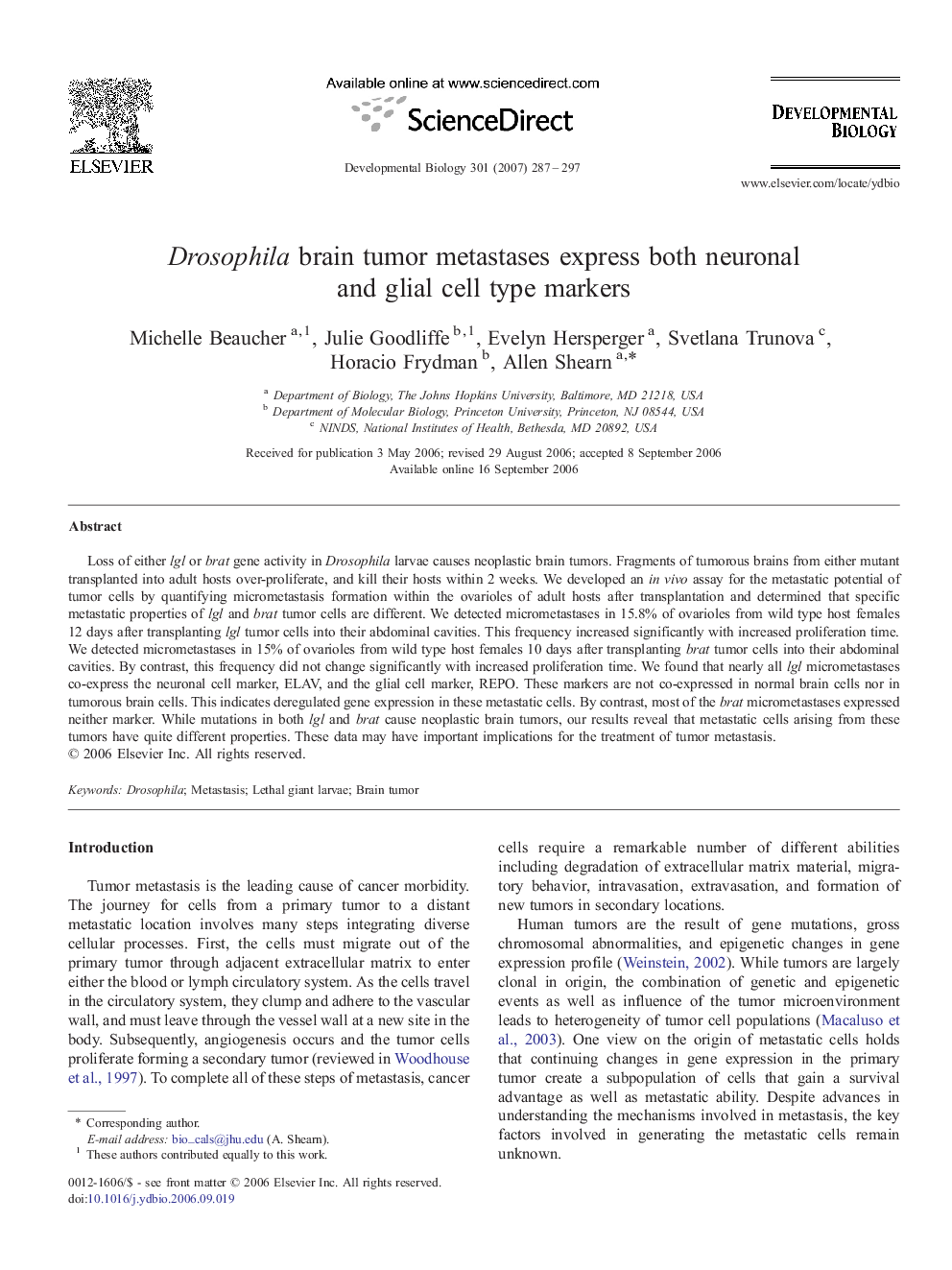| Article ID | Journal | Published Year | Pages | File Type |
|---|---|---|---|---|
| 2175549 | Developmental Biology | 2007 | 11 Pages |
Abstract
Loss of either lgl or brat gene activity in Drosophila larvae causes neoplastic brain tumors. Fragments of tumorous brains from either mutant transplanted into adult hosts over-proliferate, and kill their hosts within 2Â weeks. We developed an in vivo assay for the metastatic potential of tumor cells by quantifying micrometastasis formation within the ovarioles of adult hosts after transplantation and determined that specific metastatic properties of lgl and brat tumor cells are different. We detected micrometastases in 15.8% of ovarioles from wild type host females 12Â days after transplanting lgl tumor cells into their abdominal cavities. This frequency increased significantly with increased proliferation time. We detected micrometastases in 15% of ovarioles from wild type host females 10Â days after transplanting brat tumor cells into their abdominal cavities. By contrast, this frequency did not change significantly with increased proliferation time. We found that nearly all lgl micrometastases co-express the neuronal cell marker, ELAV, and the glial cell marker, REPO. These markers are not co-expressed in normal brain cells nor in tumorous brain cells. This indicates deregulated gene expression in these metastatic cells. By contrast, most of the brat micrometastases expressed neither marker. While mutations in both lgl and brat cause neoplastic brain tumors, our results reveal that metastatic cells arising from these tumors have quite different properties. These data may have important implications for the treatment of tumor metastasis.
Related Topics
Life Sciences
Biochemistry, Genetics and Molecular Biology
Cell Biology
Authors
Michelle Beaucher, Julie Goodliffe, Evelyn Hersperger, Svetlana Trunova, Horacio Frydman, Allen Shearn,
